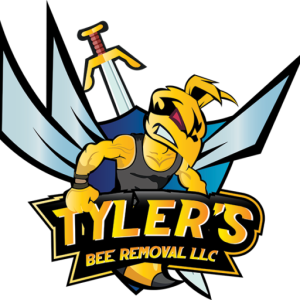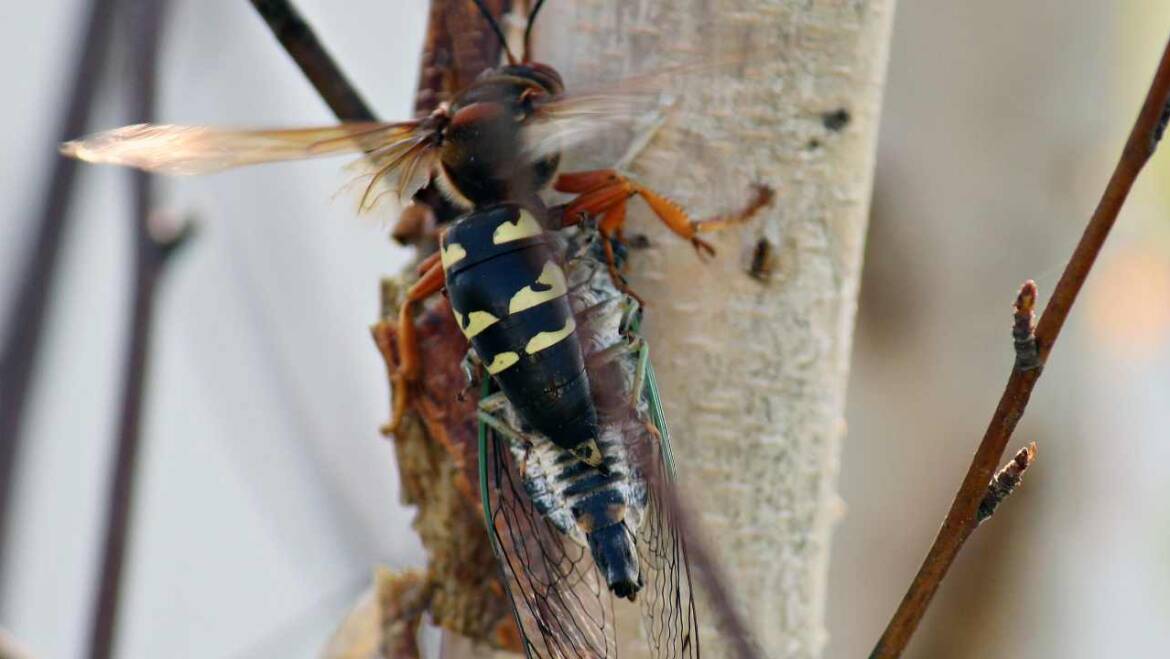Cicada Killer Wasp Nest Removal
What is Cicada Killer Wasp Nest Removal?
Cicada killer wasp nest removal pertains to the method of securely eradicating and taking away a nest made by cicada killer wasps from a designated area. Cicada killer wasps are large stinging insects known to burrow into the ground to build their nests, but they can also establish them in places like walls or embankments. Eliminating a cicada killer wasp nest demands specialized understanding and suitable safety measures to guarantee the well-being of people and the immediate environment. Professionals in cicada killer wasp nest removal are frequently engaged due to their expertise in this niche. These experts are adept at identifying cicada killer wasp species, pinpointing their nesting sites, and utilizing the correct removal techniques.
The procedure usually kicks off with an exhaustive review of the nesting area and the degree of wasp presence. Following the assessment, the removal experts craft a plan best suited to the particular scenario. They often wear safety equipment, like specialized suits, to defend themselves against potential stings throughout the process.
The actual removal could encompass diverse methods contingent on the nest’s dimensions, its accessibility, and the species of cicada killer wasp. Popular tactics entail the use of insecticides, foams, or suction devices to exterminate the wasps and securely discard the nest. Some professionals might also adopt eco-friendly measures to curtail any negative impacts on the environment.
Opting for a trusted cicada killer wasp nest removal service is crucial to guarantee that the task is accomplished safely and proficiently. Endeavors to clear a nest devoid of the right expertise and tools can result in painful stings, potential harm, and further issues.
What is a Cicada Killer Wasp?
The Cicada Killer Wasp, scientifically known as Sphecius Speciosus, is a large, solitary wasp species native to the United States. Characterized by their sizeable, robust body and distinctive coloration, they primarily prey on cicadas, which they capture and paralyze to provide food for their offspring. Despite their fearsome appearance and name, Cicada Killer Wasps are generally not aggressive towards humans unless provoked. Female wasps possess a stinger which they use primarily for hunting cicadas, while males, although more aggressive in behavior, lack a stinger entirely. Their life cycle revolves around hunting cicadas, burrowing tunnels in the ground for their larvae, and continuing this predatory cycle.
Dangers of DIY Cicada Killer Wasp Nest Removal
Taking matters into your own hands for cicada killer wasp nest removal can be perilous and even life-threatening. Cicada killer wasps are protective of their territory, and they will vigorously guard their nest against perceived intruders. It’s vital to wear the right safety equipment, including a beekeeping outfit, gloves, and a face shield, to lessen the chances of being stung. Additionally, DIY approaches might not guarantee full removal and could inadvertently scatter the wasps, making the mission of finding and eradicating the nest even harder.
Below are the hazards tied to DIY cicada killer wasp nest removal:
- Stings from cicada killer wasps
- Failure to entirely remove the nest
- Wasps migrating to different parts of your property
- Wasps re-establishing at the original site
Cicada Killer Wasp Nest Removal
Cicada killer wasp nest removal is the process of eliminating a cicada killer wasp’s nest from a home or business premises. Cicada killer wasps are a species of wasp that can establish a nest in various locations, such as the ground, eaves of roofs, walls of homes, or other outdoor spaces. Removing their nest can be challenging and potentially hazardous, so it’s recommended to engage a professional service for the task.
Cicada Killer Wasp Removal
Cicada killer wasps are sizable, solitary wasps known for their predation on cicadas. While their menacing appearance can be intimidating, they’re generally non-aggressive towards humans unless provoked. However, their presence can become a nuisance, especially when they establish burrows in well-maintained lawns or playgrounds. The process of cicada killer wasp removal involves identifying their nests, using safe and effective methods to evict or eradicate them, and taking preventive measures to deter future nesting. Given the potential challenges and risks associated with handling these wasps, seeking professional assistance for removal is often recommended to ensure safety and efficacy.
Risks in DIY Solutions for Cicada Killer Wasp Nest Removal?
DIY solutions for Cicada Killer Wasp nest removal can be risky because these wasps can become aggressive if they feel threatened. Without the appropriate protective gear, an individual could get stung. Moreover, if the nest isn’t fully eradicated, the cicada killer wasps might come back and reconstruct the nest. Also, employing methods that aren’t recommended for nest removal might harm the property or the neighboring environment.
Here are some of the risks associated with DIY solutions for Cicada Killer Wasp nest removal:
- Lack of suitable protective gear can lead to stings
- Incomplete removal of the nest might cause wasps to come back
- Using non-recommended techniques can result in damage to the property or environment
Do Cicada Killers sting?
Female Cicada Killers have the ability to sting but are generally not aggressive towards humans unless threatened. Males can’t sting but may exhibit aggressive behavior without causing any harm.
How can I identify a Cicada Killer nest?
Cicada Killer nests are typically burrows in the ground, often visible as small mounds of dirt with a hole in the center. They prefer sandy soils and areas with good sun exposure for their nesting sites.
Are there any natural repellents or methods to deter Cicada Killers?
While there isn’t a one-size-fits-all solution, some people have found success in deterring Cicada Killers by keeping the soil wet (as they prefer dry soils) or using natural repellents like peppermint oil. However, results may vary.
Are Cicada Killers beneficial to the environment?
Yes, Cicada Killers help control the cicada population. While their presence might be intimidating, they play an essential role in the ecosystem by keeping cicada numbers in check.
How do professionals remove Cicada Killer nests?
Professionals use a combination of safe insecticides, protective gear, and expert knowledge of wasp behavior to safely and effectively remove Cicada Killer nests without causing harm to the environment.
Cicada Killer Removal Near Me
Eliminating cicada killers from residential or commercial properties in Austin is crucial to ensure safety and comfort. Cicada killers, a type of burrowing wasp, establish their nests in various places, including Austin’s gardens, yards, and patios. Tackling a cicada killer nest should be done carefully and with knowledge to avoid potential stings and injuries. For thorough and safe removal of these pests, it’s recommended to contact expert pest control services in Austin that focus on cicada killer nest eradication. If you’re facing an urgent cicada killer issue in Austin, Texas, look for reputable and seasoned service providers in the area.
Cicada Killer Removal Cost
Cicada killer removal cost in Texas can differ based on numerous elements. When confronted with a cicada killer problem, swift action is vital to secure the safety and tranquility of your residence or commercial space. It’s worth highlighting that the precise cost for cicada killer removal services might deviate depending on the intensity of the problem, the size and position of the burrow, and the proficiency of the specialists employed.
On average, the cost of cicada killer removal in Texas lies between $100 and $500. This fee generally covers the assessment of the issue, the removal operation, and any essential subsequent treatments. Nonetheless, securing several estimates from varied pest control agencies is advisable to pinpoint an accurate cost for your particular case.
Variables that can alter the cost encompass the ease of access to the burrow, the species of cicada killer at hand, and the intricacy of the eradication method. For instance, burrows found in challenging locations or those created by more assertive cicada killer species might demand advanced tools or unique methods, resulting in an increased price.
Opting for credentialed and seasoned pest control experts is crucial. They should be capable of safely and efficiently eliminating the cicada killer burrow. While pricing is a factor to ponder, it’s of equal significance to weigh the standing, skills, and trustworthiness of the chosen service provider, ensuring a comprehensive and lasting resolution to your cicada killer issue.
Cicada Killer Wasps Removal: Comprehensive Guide to Safely Handling Infestations
Cicada Killer Wasps, while intriguing in nature, can be a daunting presence on one’s property. Their intimidating size and habits can be concerning for many homeowners. It’s crucial to handle them safely, respecting both the environment and these incredible insects. Always remember, professional removal is the top choice for ensuring safety and efficiency.
1. Recognizing the Cicada Killer Wasps
Before proceeding, confirm you’re indeed dealing with Cicada Killer Wasps. These large, solitary wasps have a distinct black body with pale-yellow patterns. They’re primarily non-aggressive, but females, in particular, can sting when threatened, especially around their burrows.
2. Why DIY Methods Aren’t Recommended for Cicada Killer Wasps
DIY solutions may seem tempting, but they’re often ineffective and can even be harmful. Using pesticides or homemade concoctions can affect other beneficial insects, the environment, pets, and people. Cicada Killer Wasps, crucial in controlling cicada numbers, can suffer needlessly from these methods, impacting the ecosystem adversely.
3. Safety Measures Around Cicada Killer Wasps Territories
If you’ve spotted a Cicada Killer Wasp burrow, keep kids and pets at a safe distance. While not extremely aggressive, any wasp can become protective if they sense their nest is in danger.
4. Expert Advice: Contacting Cicada Killer Wasps Professionals
Now’s the time to call in the pros. Pest control experts have the required tools, experience, and methods to address the situation without inflicting harm. Share your observations, and they’ll embark on a thorough assessment.
5. The Professional Cicada Killer Wasps Removal Process
Specialists typically adhere to a specific protocol:
- Assessment: Ascertain the scope of the Cicada Killer Wasps’ presence and devise the most effective removal strategy.
- Equipment: Use of specialized tools ensures efficacy and minimal disturbance to the locale.
- Safe Relocation: Wasps are gently extracted, ensuring their safe relocation without jeopardizing them or the environment.
- Prevention: Post removal, professionals will guide on thwarting future Cicada Killer Wasps infestations, possibly involving landscaping alterations or other preventive measures.
6. Monitoring Post Cicada Killer Wasps Removal
After a successful eviction, remain vigilant for signs of their return. Given the right conditions, Cicada Killer Wasps can come back, especially during prime cicada periods.
7. Understanding Cicada Killer Wasps and Their Ecosystem Role
Despite their daunting presence, Cicada Killer Wasps are an integral component of our ecosystem. By prioritizing safety and the environment and opting for professional assistance, you ensure these wasps and your surroundings coexist harmoniously.
Note: Always engage with a regional pest control specialist acquainted with your area’s unique conditions and species.

